Oggi parliamo di un altro tè Wulong (detto anche oolong). Questo tè semi-ossidato ha un ossidazione del 30% ed è dolce e floreale con un fondo aromatico. Anche questo si presenta con foglie verde brillante appallottolate per la sua particolare lavorazione. La lavorazione prevede appassimento al sole per un paio d’ore per garantire la leggera ossidazione, appassimento “indoor” con sfregamento, scuotimento e ammaccatura per arrivare al risultato desiderato. Infine si passa all’essiccazione e classificazione.
Il termine “wulong” significa drago nero è ha 400 anni.
Ho acquistato questo infuso in foglie da Spezie dal Mondo dove potete trovare una vasta gamma di prodotti. Qui troverete tempi di infusioni differenti perché viene pensata più come una tisana erboristica.
SCHEDA DI DEGUSTAZIONE
Tipologia: tè balled oolong o wulong.
Provenienza: Taiwan.
Proprietà: rinfrescante.
Foglie a secco: foglie scure color giada arrotolate semi-ossidate.
Foglie dopo infusione: tenere ed omogenee di color verde.
Aroma: dolce e fresco aromatizzato al lemongrass e gelsomino.
Colore del liquore: dal giallo chiaro al paglierino.
Gusto: intenso e persistente, dolce e fresco, con note fiorite e un fondo aromatico di cuoio.
Preparazione: unica infusione di 2,5-3 grammi di foglie ogni 200 ml di acqua PH 6.8 a 90 gradi per un tempo di 3 massimo 4 minuti. Le foglie possono essere infuse successivamente a un minuto e 30 secondi.
Teiera ideale: Yixing – rito Gongfucha oppure in tazza gaiwan.
Abbinamenti: con formaggi, frutta secca e cioccolato, ma anche torte di pasta frolla.
Aggiunte: nessuna.
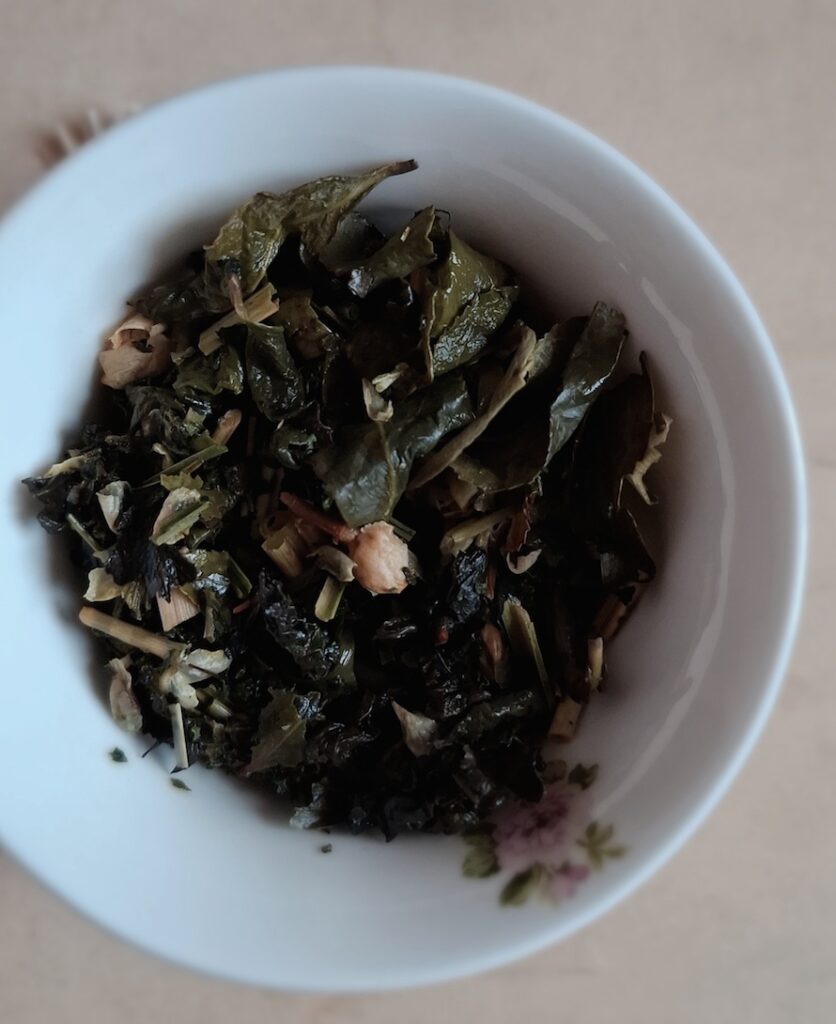
Foglie dopo infusione di un Jasmine Oolong con boccioli di gelsomino e lemongrass – Photo@Veru
Jasmine Oolong Tasting

Today we talk about another Wulong tea (also called oolong). This semi-oxidized tea has an oxidation of 30% and is sweet and floral with an aromatic base. This one also has bright green leaves balled up due to its particular processing. The processing involves withering in the sun for a couple of hours to ensure light oxidation, “indoor” withering with rubbing, shaking and bruising to achieve the desired result. Finally, we move on to drying and classification.
The term “wulong” means black dragon and is 400 years old.
I purchased this leaf infusion from Spezie dal Mondo where you can find a wide range of products. Here you will find different infusion times because it is thought of more as a herbal tea.
TASTING NOTE
Type: balled oolong or wulong tea.
Origin: Taiwan.
Properties: refreshing.
Dry leaves: dark jade-colored leaves rolled semi-oxidized.
Leaves after infusion: tender and homogeneous green.
Aroma: sweet and fresh flavored with lemongrass and jasmine.
Color of the liquor: from light yellow to straw.
Taste: intense and persistent, sweet and fresh, with floral notes and an aromatic leather base.
Preparation: single infusion of 2.5-3 grams of leaves every 200 ml of water PH 6.8 at 90 degrees for a time of 3 maximum 4 minutes. The leaves can be infused subsequently at one minute and 30 seconds.
Ideal teapot: Yixing – Gongfucha ritual or in a gaiwan cup.
Pairings: with cheeses, dried fruit and chocolate, but also shortcrust pastry cakes.
Additions: none.
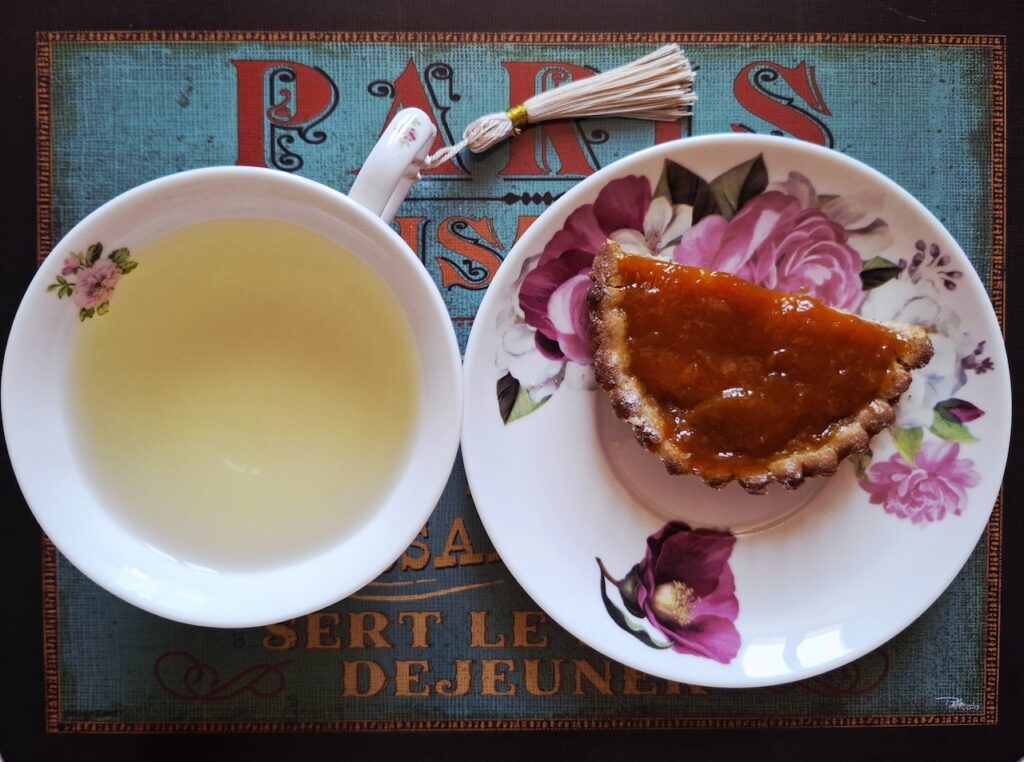
Degustazione di un Oolong aromatizzato al gelsomino – Photo@Veru
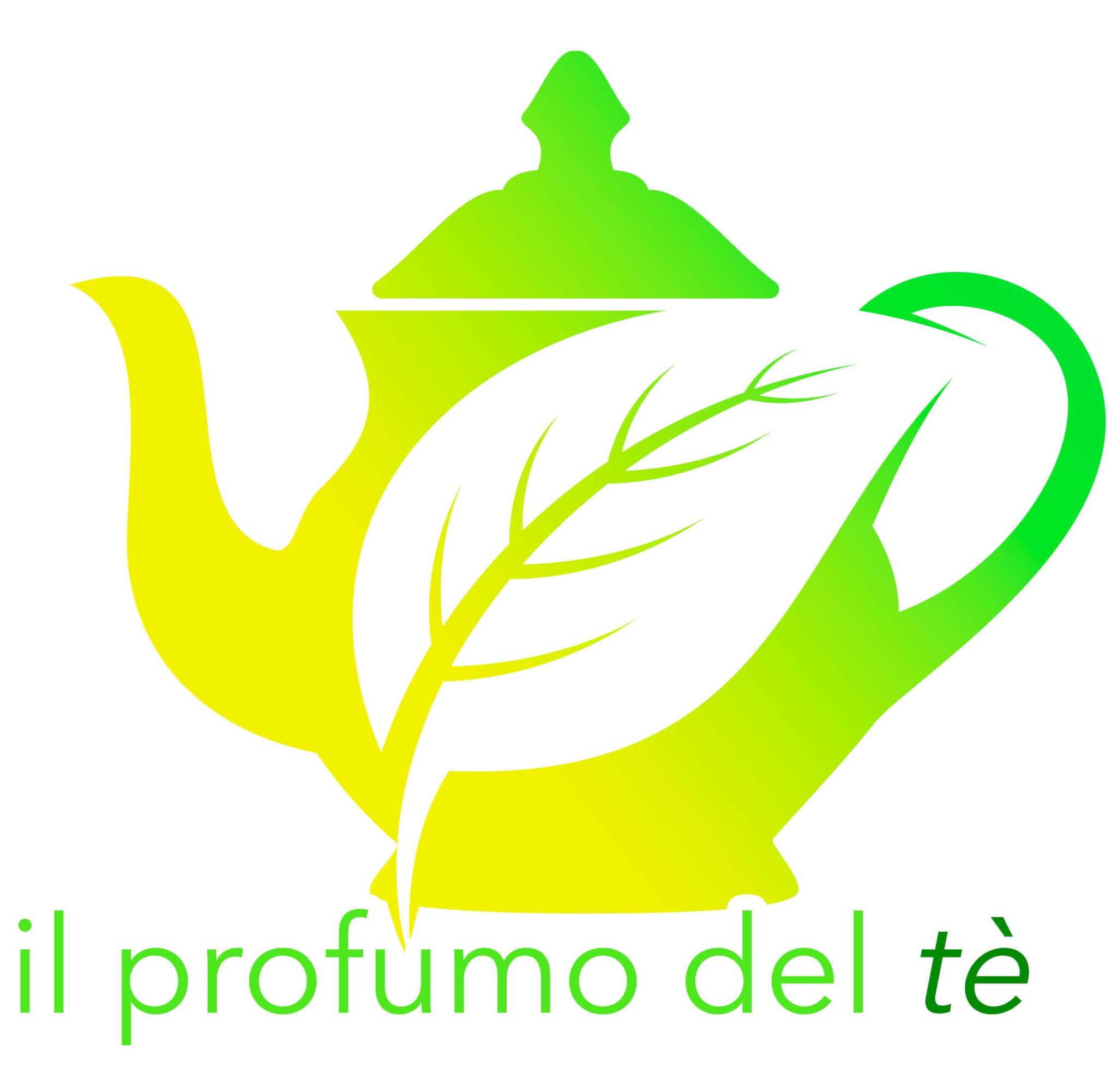
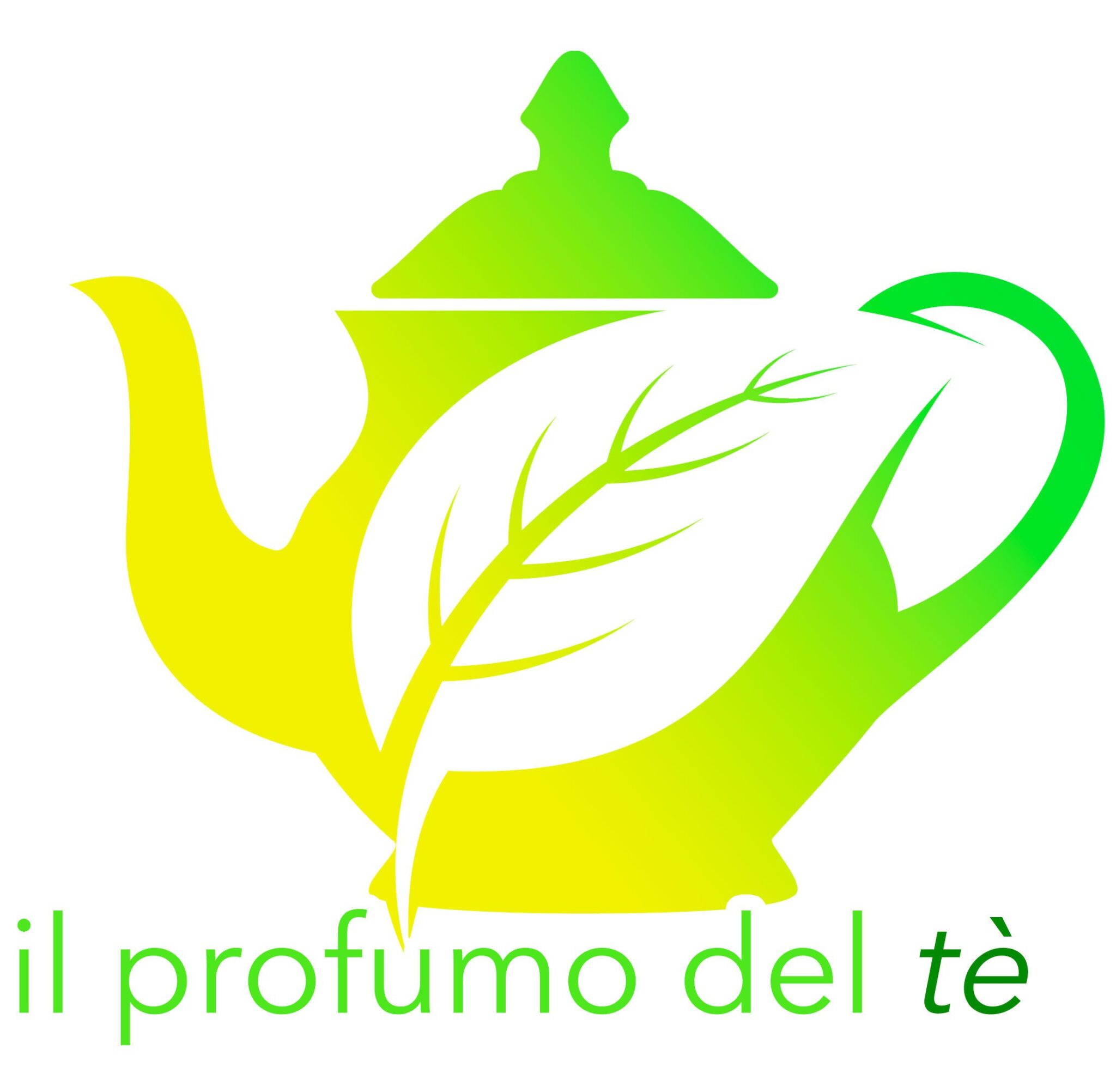
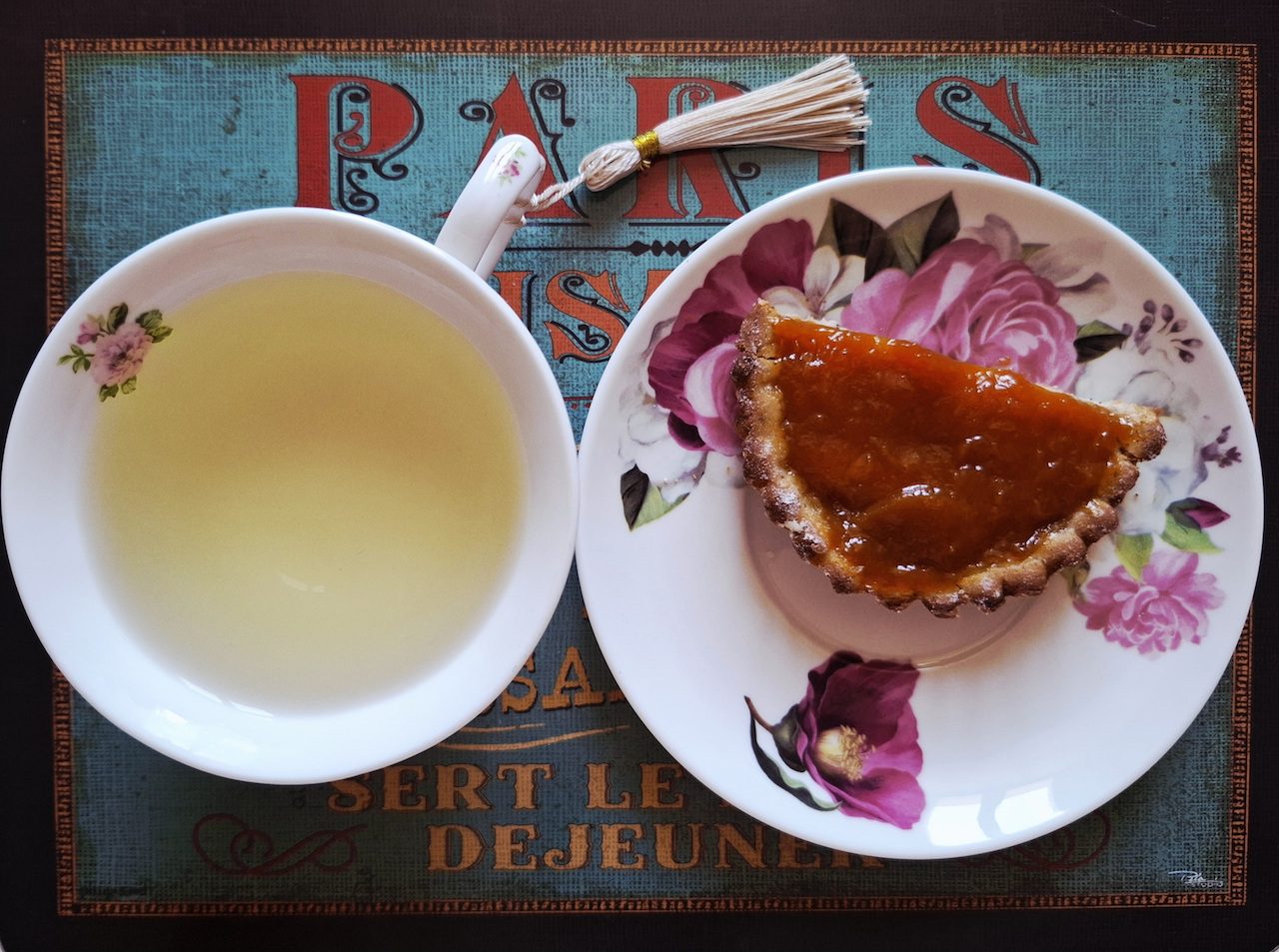
No responses yet